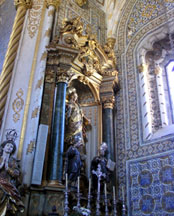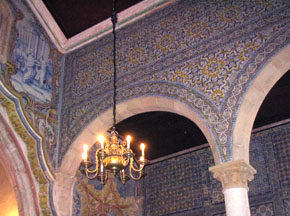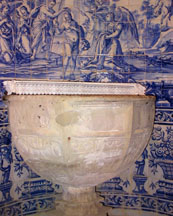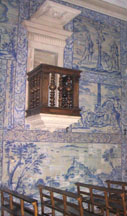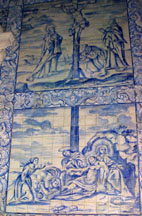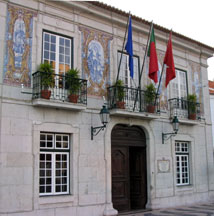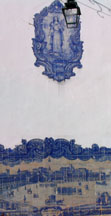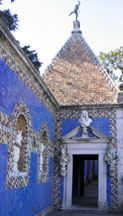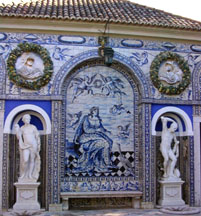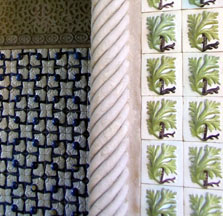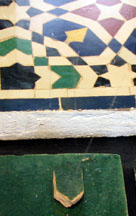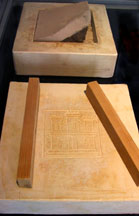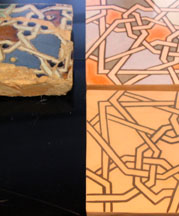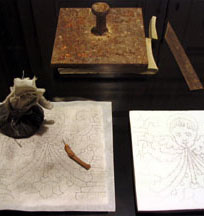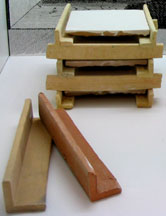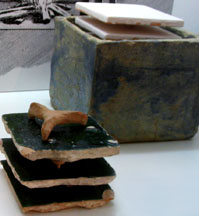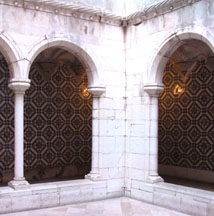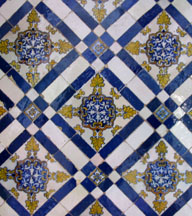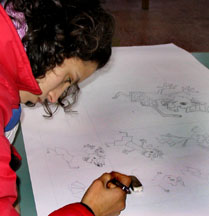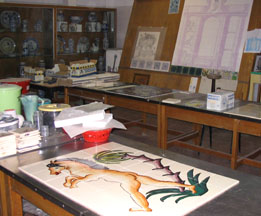|
Alicatado tiles are glazed,
fired, cut into geometric shapes with pliers (alicates), filed
smooth, then set in place. |
Clay is pressed into or onto arista molds to make
relief tiles. The wood determines the thickness of the tile in front. |
Cuerda seca (dry cord) developed in
the 15th century. Dark lines (linseed oil mixed with manganese) are
painted onto a bisqued (fired) tile to separate the glazes during
firing. |
A metal pattern is placed on a slab
of clay, then the edges are cut off with a knife inclined slightly
inwards to make a faience / majolica tile. The tile is covered with tin
glaze, which will create a white background and allow other glazes to be
painted on without running together. A design is traced onto paper, then
the lines are pricked with a pin. The paper pattern is laid on the tile
and pounced with a bag of powdered charcoal to transfer the motif.
Excess charcoal or mistakes are removed with a rabbit's tail. The
colored glazes are painted onto the tile, then the tile is fired to 1796
°F/ 980 °C. |
